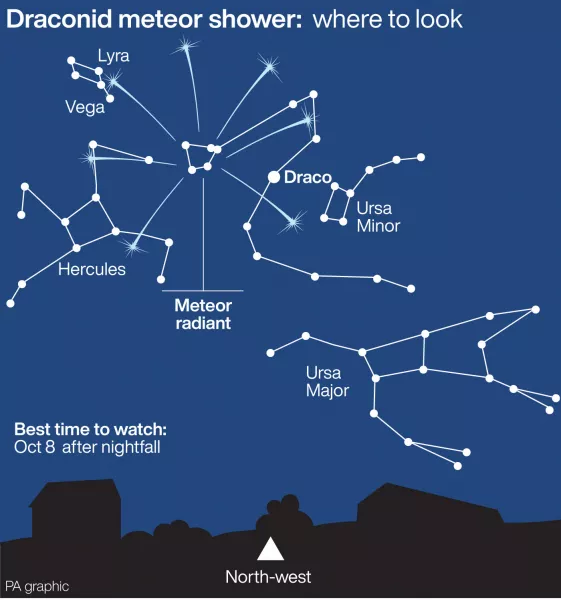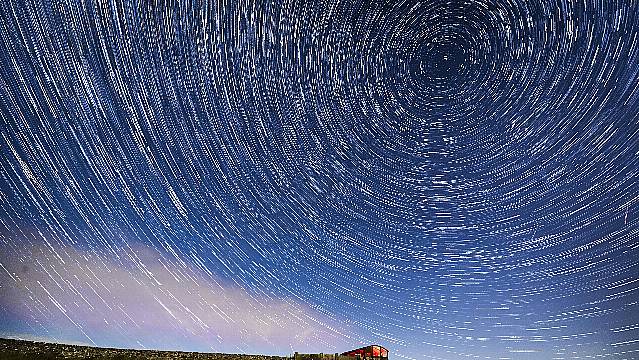The Draconid meteor shower, also known as the Giacobinids, will peak sometime during the night of October 8 and will be visible until the early morning of October 9.
Named after the constellation of Draco the dragon, the Draconids take place every year and is one of the two meteor showers to light up the skies in October.
The streaks spawn from the comet 21P/Giacobini-Zinner, which orbits around the sun for six-and-a-half years.
Anna Ross, an astronomer at the Royal Observatory Greenwich, said: “Most of this debris will burn up at a height of around 80km above the ground, so this is not a dangerous event.

“The number of meteor seen during the peak night varies quite a lot from year to year – usually there will only be around 5-20 meteors per hour visible but some years there have been reports of thousands per hour spotted.”
The Draconids will be visible in northern America, Europe and Asia until October 10.
Ms Ross said: “For the best chances to spot them, find a dark area of clear sky and allow around 20 minutes to let your eyes adapt to the dark.
“It may also be advisable to lie down as you may be looking up for a long time.”
A second meteor shower, the Orionids, will also take place later this month, peaking on October 22.







